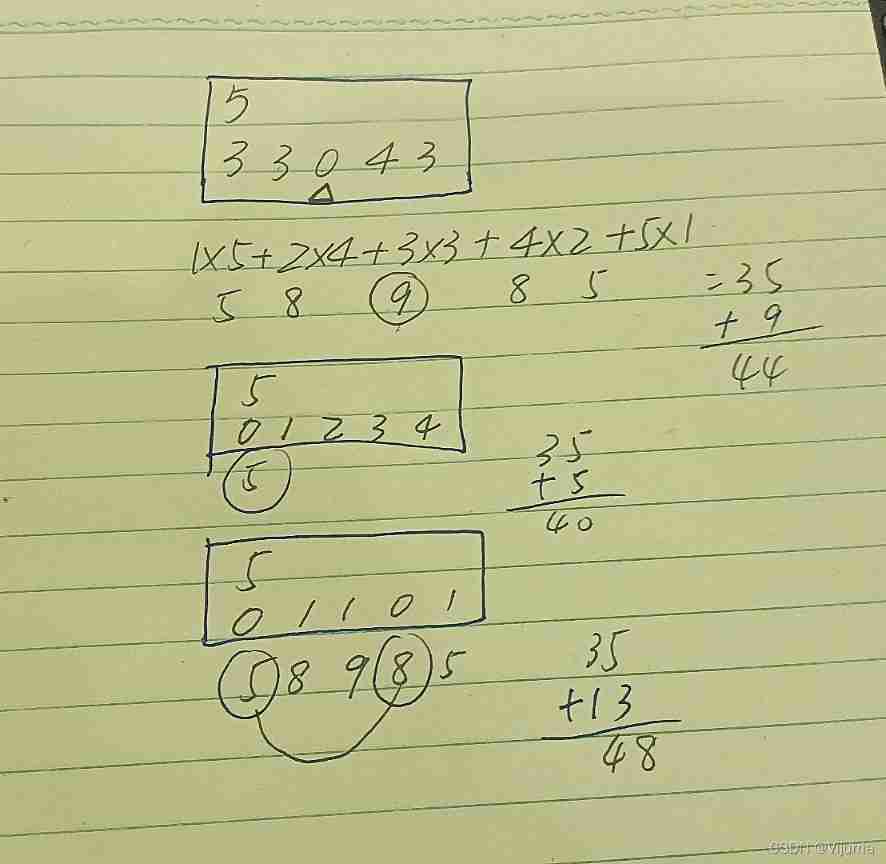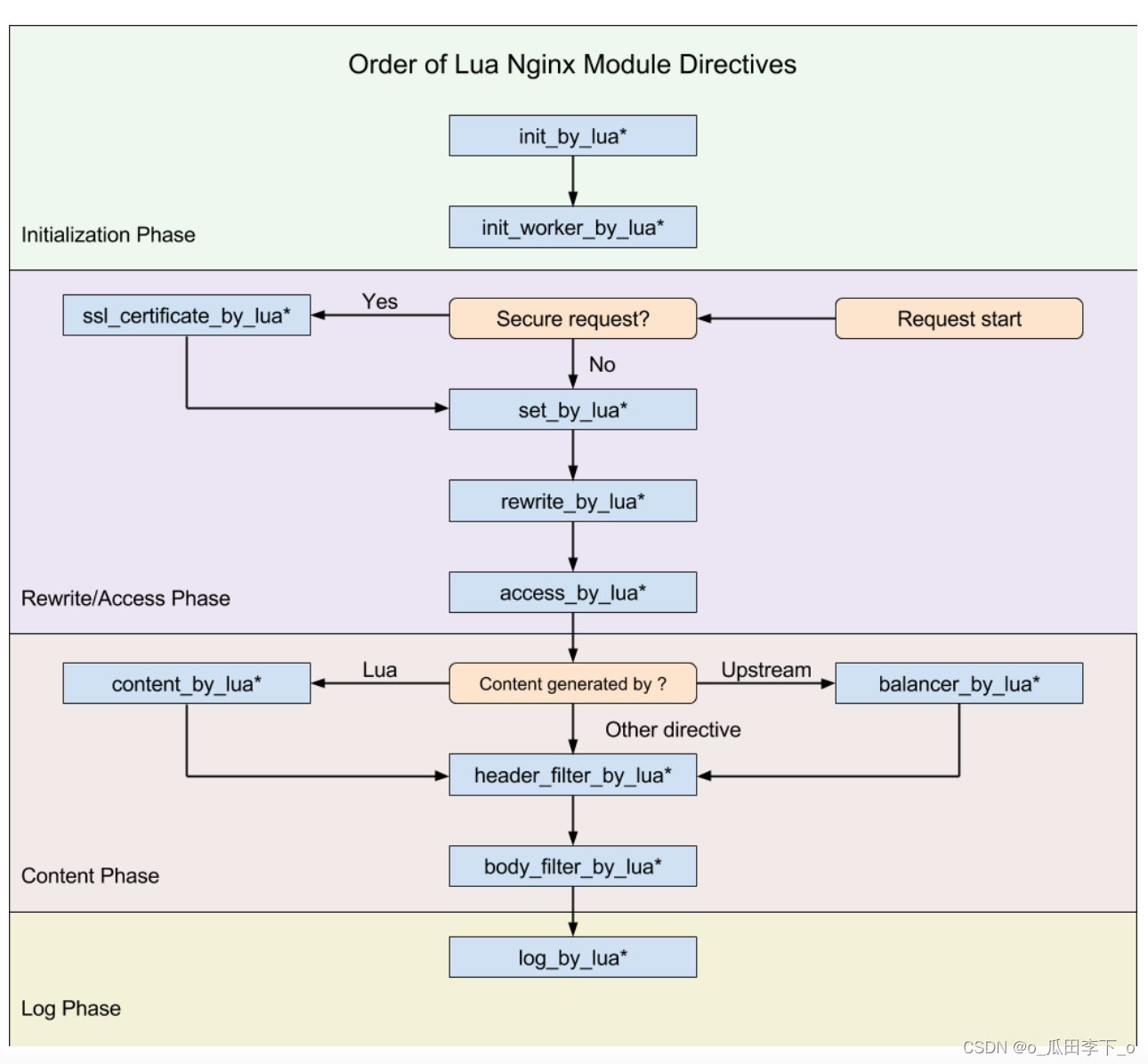当前位置:网站首页>GFS distributed file system
GFS distributed file system
2022-07-05 02:29:00 【No such person found 0330】
Catalog
1、GlusterFS brief introduction
Scalability and high performance
Glusterd( Background management process )
7、GlusterFS The type of volume
Distributed volumes (Distribute volume)
Distributed replication volumes
8、 Deploy GlusterFS to cluster around
Turn off firewall ( all node node )
Disk partition , And mount ( all node node )
Modify hostname , To configure /etc/hosts file ( all node node )
install 、 start-up GlusterFS( all node Operation on node )
Add nodes to the storage trust pool ( stay node1 Operation on node )
At every Node View cluster status on node
Create distributed striped volumes
Create a distributed replication volume
View a list of all current volumes
Deploy Gluster client (192.168.239.50)
View the Striped volume file distribution
View the distribution of replication volumes
View the distributed striped volume distribution
View the distributed replication volume distribution
1、GlusterFS brief introduction
- GlusterFs Is an open source distributed file system .
- By the storage server 、 Client and NFS/Samba Storage gateway ( Optional , Choose to use as needed ) form .
- No metadata server component , This helps to improve the performance of the whole system 、 Reliability and stability .
MFS
Traditional distributed file systems mostly store metadata through meta servers , Metadata contains directory information on the storage node 、 Directory structure, etc . This design has a high efficiency in browsing the directory , But there are also some defects , For example, single point of failure . Once the metadata server fails , Even if the node has high redundancy , The entire storage system will also crash .
GlusterFs
GlusterFs Distributed file system is based on the design of no meta server , Strong horizontal data expansion ability , High reliability and storage efficiency .
GlusterFs It's also scale-out( Horizontal scaling ) Storage solutions Gluster At the heart of , It has strong horizontal expansion ability in storing data , It can support numbers through extension PB Storage capacity and handling of thousands of clients .
GlusterFs Support with the help of TCP/IP or InfiniBandRDMA The Internet ( A technology that supports multiple concurrent links , With high bandwidth 、 Low latency 、 Features of high scalability ) Bring together physically dispersed storage resources , Provide unified storage services , And use a unified global namespace to manage data .
2、GlusterFS characteristic
Scalability and high performance
GlusterFs Leverage dual features to provide high-capacity storage solutions .
scale-out The architecture allows for Simply add storage nodes to improve storage capacity and performance ( disk 、 The calculation and I/o Resources can be increased independently ), Support 10GbE and InfiniBand High speed internet connection .
Gluster Elastic Hash (ElasticHash) It's solved GlusterFS Dependency on metadata server , Improved single point of failure and performance bottlenecks , The parallel data access is realized .Gluste rFS The elastic hash algorithm can intelligently locate any data fragment in the storage pool ( Store the data in pieces on different nodes ), There is no need to view the index or query the metadata server .
High availability
GlusterFS You can copy files automatically , Such as mirror image or multiple copies , To ensure that data is always accessible , Even in case of hardware failure, it can be accessed normally .
When the data is inconsistent , The self-healing function can restore the data to the correct state , Data repair is performed in the background in an incremental manner , Almost no performance load is generated .
GlusterFS Can support all storage , Because it did not design its own private data file format , Instead, it uses the mainstream standard disk file system in the operating system ( Such as EXT3、XFS etc. ) To store files , Therefore, data can be accessed in the traditional way of accessing disk .
Global unified namespace
Distributed storage , Integrate the namespaces of all nodes into a unified namespace , Form the storage capacity of all nodes of the whole system into a large virtual storage pool , The front-end host can access these nodes to complete data reading and writing operations .
Elastic volume management
GlusterFs By storing data in logical volumes , The logical volume is obtained by independent logical partition from the logical storage pool .
Logical storage pools can be added and removed online , No business interruption . Logical volumes can grow and shrink online as needed , And load balancing can be realized in multiple nodes .
File system configuration can also be changed and applied online in real time , It can adapt to changes in workload conditions or online performance tuning .
Based on standard protocol
Gluster Storage services support NES、CIFS、HTTP、FTP、SMB And Gluster Native protocol , Completely with POSIX standard ( Portable operating system interface ) compatible .
Existing applications can be modified without any modification Gluster To access the data in , You can also use dedicated API Visit .
3、GlusterFS The term
Brick( Memory block )
It refers to the private partition provided by the host for physical storage in the trusted host pool , yes GlusterFs Basic storage unit in , It is also the storage directory provided externally on the server in the trusted storage pool . The format of the storage directory consists of the absolute path of the server and directory , The expression is SERVER:EXPORT, Such as 192.168.239.10:/data/mydir/.
Volume( Logic volume )
A logical volume is a set of Brick Set . A volume is a logical device for data storage , Be similar to LvM Logical volumes in . Days section Gluster Management operations are performed on volumes .
FUSE
It's a kernel module , Allow users to create their own file systems , There is no need to modify the kernel code .
VES
The interface provided by kernel space to user space to access disk .
Glusterd( Background management process )
Run on each node in the storage cluster .
4、 Modular stack architecture
GlusterFs Use modularity 、 Stack architecture .
Through various combinations of modules , To achieve complex functions . for example Replicate The module can implement RAID1,Stripe The module can implement RAID0, Through the combination of the two, we can realize RAID10 and RAID01, At the same time, higher performance and reliability .
5、GlusterFS workflow
- Client or application through GlusterFs The mount point of access data .
- linux The system kernel passes through VFS API Receive requests and process .
- VFS Submit the data to FUSE Kernel file system , And register an actual file system with the system FUSE, and FUSE File systems pass data through /dev/fuse The equipment documents were submitted to GlusterFS client End . Can be FUSE The file system is understood as a proxy .
- GlusterFS client After receiving the data ,client Process the data according to the configuration of the configuration file .
- after GlusterFs client After processing , Transfer data over the network to the remote GlusterFs server, And write the data to the server storage device .
6、 elastic HASH Algorithm
elastic HASH The algorithm is Davies-Meyer The specific implementation of the algorithm , adopt HASH The algorithm can get a 32 Bit integer range hash value , Suppose there are... In the logical volume N Units of storage Brick, be 32 The integer range of bits will be divided into N A continuous subspace , Each space corresponds to a Brick.
When a user or application accesses a namespace , By evaluating the namespace HASH. value , According to the HASH Value corresponding to 32 Bit integer where the spatial positioning data is located Brick.
elastic HASH The advantages of the algorithm
Make sure that the data is evenly distributed in each Brick in .
Solved the dependency on metadata server , And then solve the single point of failure and access bottlenecks .
7、GlusterFS The type of volume
GlusterFS Support 7 Seed roll
- Distributed volumes
- Strip roll
- Copy volume
- Distributed striped volume
- Distributed replication volumes
- Strip copy volume
- Distributed striped replication volumes
Distributed volumes (Distribute volume)
- File by HAS The daily algorithm is distributed to all Brick Server On , This kind of roll is GlusterFS The default volume of ; In document units according to HASH The algorithm hashes to different Brick, In fact, it just expands the disk space , If a disk is damaged , Data will also be lost , File level RAIDO, No fault tolerance .
- In this mode , The file is not partitioned , The file is stored directly in some Server Node .
- Due to the direct use of the local file system for file storage , So access efficiency has not improved , On the contrary, it will be reduced due to network communication .
Example principle
File1 and File2 Store in Server1, and File3 Store in server2, Files are stored randomly , A file ( Such as File1) Either in server1 On , Either in Server2 On , Can't be stored in pieces at the same time Server1 and Server2 On .
Features of distributed volumes
- Files are distributed on different servers , No redundancy .
- Expand the size of the volume more easily and cheaply .
- A single point of failure can cause data loss .
- Rely on the underlying data protection .
Create distributed volumes
Create a file called dis-volume Distributed volume of , The document will be based on HASH Distribution in server1:/dir1、server2:/dir2 and server3:/dir3 in
gluster volume create dis-volume server1:/dirl server2:/dir2 server3:/dir3
Strip roll
- Divide the file into N block (N Strip nodes ), Polling is stored in each Brick Server node
- When storing large files , The performance is particularly outstanding
- No redundancy , similar Raid0
characteristic
- The data is divided into smaller pieces and distributed to different stripe areas in the block server cluster
- Distribution reduces load and smaller files speed up access
- No data redundancy
Create a striped roll
Created a new one called Stripe-volume Strip roll of , The files will be stored in the Server1:/dir1 and Server2:/dir2 Two Brick in
gluster volume create stripe-volume stripe 2 transport tcp server1:/dirl server2:/dir2
Copy volume (Replica volume)
- Synchronize files to multiple Brick On , Make it have multiple copies of files , It belongs to file level RAID1, Fault tolerance . Because the data is scattered in multiple Brick in , So the read performance has been greatly improved ,, But write performance drops .
- Replication volumes are redundant , Even if one node is damaged , It does not affect the normal use of data . But because you want to save a copy , So disk utilization is low .
Example principle
File1 At the same time Server1 and Server2,File2 So it is with , amount to server2 The document in is Server1 A copy of the file in .
Replication volume features
- All servers in the volume keep a complete copy .
- The number of copies of a volume can be determined when the customer creates , However, the number of copies must be equal to Brick Number of storage servers included .
- At least two block servers or more .
- Redundancy .
Create replication volume
Create a rep-volume Copy volume of , The file will store two copies at the same time , Respectively in server1:/dirl and Server2:/dir2 Two Brick in
gluster volume create rep-volume replica 2 transport tcp serverl:/dirl server2:/dir2
Distributed striped volume
- Take into account the functions of distributed volume and striped volume
- Mainly used for large file access processing
- At least... Is needed 4 Servers
Create distributed striped volumes
Created a dis-stripe Distributed striped volume , When configuring distributed striped volumes , In the volume Brick The number of storage servers included must be a multiple of the number of stripes (>=2 times )
gluster volume create dis-stripe stripe 2 transport tcp server1:/dir1 server2:/dir2 server3:/dir3 server4:/dir4
Distributed replication volumes
- Both distributed and replicated volumes
- Used when redundancy is required
Create a distributed replication volume
Create a dis-rep Distributed striped volume , An error occurred while configuring a distributed replication volume , In the volume Brick The number of storage servers included must be a multiple of the number of stripes (>=2 times )
gluster volume create dis-rep replica 2 transport tcp server1:/dir1 server2:/dir2 server3:/dir3 server4:/dir4
8、 Deploy GlusterFS to cluster around
Node1 node :node1/192.168.52.110 disk :/dev/sdb1 Mount point :/data/sdb1
/dev/sdc1 /data/sdc1
/dev/sdd1 /data/sdd1
/dev/sde1 /data/sde1
Node2 node :node2/192.168.52.120 disk :/dev/sdb1 Mount point :/data/sdb1
/dev/sdc1 /data/sdc1
/dev/sdd1 /data/sdd1
/dev/sde1 /data/sde1
Node3 node :node3/192.168.52.130 disk :/dev/sdb1 Mount point :/data/sdb1
/dev/sdc1 /data/sdc1
/dev/sdd1 /data/sdd1
/dev/sde1 /data/sde1
Node4 node :node4/192.168.52.140 disk :/dev/sdb1 Mount point :/data/sdb1
/dev/sdc1 /data/sdc1
/dev/sdd1 /data/sdd1
/dev/sde1 /data/sde1
Client node :192.168.52.50
Prepare the environment ( all node Operation on node )
Add disks and refresh
echo "---">/sys/class/scsi host/hoste/scan
echo "---">/sys/class/scsi host/host1/scan
echo "---">/sys/class/scsi host/host2/scanTurn off firewall ( all node node )
systemctl stop firewalld
setenforce 0
Disk partition , And mount ( all node node )
vim fdisk.sh
#!/bin/bash
NEWDEV=`ls /dev/sd* | grep -o 'sd[b-z]' | uniq`
for VAR in $NEWDEV
do
echo -e "n\np\n\n\n\nw\n" | fdisk /dev/$VAR &> /dev/null
mkfs.xfs /dev/${VAR}"1" &> /dev/null
mkdir -p /data/${VAR}"1" &> /dev/null
echo "/dev/${VAR}"1" /data/${VAR}"1" xfs defaults 0 0" >> /etc/fstab
done
mount -a &> /dev/null
chmod +x ./fdisk.sh
cd /opt/
./fdisk.sh
Modify hostname , To configure /etc/hosts file ( all node node )
# With Node1 Node as an example
hostnamectl set-hostname node1
su
echo "192.168.52.110 node1" >> /etc/hosts
echo "192.168.52.120 node2" >> /etc/hosts
echo "192.168.52.130 node3" >> /etc/hosts
echo "192.168.52.140 node4" >> /etc/hosts
install 、 start-up GlusterFS( all node Operation on node )
# take gfsrepo Software uploaded to /opt Under the table of contents
cd /etc/yum.repos.d/
mkdir repo.bak
mv *.repo repo.bak
vim glfs.repo
[glfs]
name=glfs
baseurl=file:///opt/gfsrepo
gpgcheck=0
enabled=1
yum clean all && yum makecache
#yum -y install centos-release-gluster # If official YUM Source installation , It can point directly to the Internet warehouse
yum -y install glusterfs glusterfs-server glusterfs-fuse glusterfs-rdma
systemctl start glusterd.service
systemctl enable glusterd.service
systemctl status glusterd.service
Add nodes to the storage trust pool ( stay node1 Operation on node )
# Just on one Node Add other nodes to the node
gluster peer probe node1
gluster peer probe node2
gluster peer probe node3
gluster peer probe node4
At every Node View cluster status on node
gluster peer status
Create a volume
According to the plan, create the following volume
| Volume name | Volume type | Brick |
|---|---|---|
| dis-volume | Distributed volumes | node1(/data/sdb1)、node2(/data/sdb1) |
| stripe-volume | Strip roll | node1(/data/sdc1)、node2(/data/sdc1) |
| rep-volume | Copy volume | node3(/data/sdb1)、node4(/data/sdb1) |
| dis-stripe | Distributed striped volume | node1(/data/sdd1)、node2(/data/sdd1)、node3(/data/sdd1)、node4(/data/sdd1) |
| dis-rep | Distributed replication volumes | node1(/data/sde1)、node2(/data/sde1)、node3(/data/sde1)、node4(/data/sde1) |
Create distributed volumes
# Create distributed volumes , No type specified , Distributed volumes are created by default
gluster volume create dis-volume node1:/data/sdb1 node2:/data/sdb1 force
# View volume list
gluster volume list
# Start the new distributed volume
gluster volume start dis-volume
# View information about creating distributed volumes
gluster volume info dis-volume
Create a striped roll
# The specified type is stripe, Values for 2, And followed by 2 individual Brick Server, So you're creating a striped volume
gluster volume create stripe-volume stripe 2 node1:/data/sdc1 node2:/data/sdc1 force
gluster volume start stripe-volume # Start new striped volume
gluster volume info stripe-volume # View information about creating striped volumes
Create replication volume
# The specified type is replica, Values for 2, And followed by 2 individual Brick Server, So what is created is a copy volume
gluster volume create rep-volume replica 2 node3:/data/sdb1 node4:/data/sdb1 force
gluster volume start rep-volume # Start replication volume
gluster volume info rep-volume # View replication volume information
Create distributed striped volumes
# The specified type is stripe, Values for 2, And followed by 4 individual Brick Server, yes 2 Twice as many , So you create a distributed striped volume
gluster volume create dis-stripe stripe 2 node1:/data/sdd1 node2:/data/sdd1 node3:/data/sdd1 node4:/data/sdd1 force
gluster volume start dis-stripe
gluster volume info dis-stripe
Create a distributed replication volume
# The specified type is replica, Values for 2, And followed by 4 individual Brick Server, yes 2 Twice as many , So you create a distributed replication volume
gluster volume create dis-rep replica 2 node1:/data/sde1 node2:/data/sde1 node3:/data/sde1 node4:/data/sde1 force
gluster volume start dis-rep
gluster volume info dis-rep
View a list of all current volumes
gluster volume list
Deploy Gluster client (192.168.239.50)
Install client software
# take gfsrepo Software uploaded to /opt Suborder
cd /etc/yum.repos.d/
mkdir repo.bak
mv *.repo repo.bak
vim glfs.repo
[glfs]
name=glfs
baseurl=file:///opt/gfsrepo
gpgcheck=0
enabled=1
yum clean all && yum makecache
yum -y install glusterfs glusterfs-fuse
Create mount directory
mkdir -p /test/{dis,stripe,rep,dis_stripe,dis_rep}
ls /test
To configure /etc/hosts file
echo "192.168.52.110 node1" >> /etc/hosts
echo "192.168.52.120 node2" >> /etc/hosts
echo "192.168.52.130 node3" >> /etc/hosts
echo "192.168.52.140 node4" >> /etc/hosts
mount Gluster file system
# To mount temporarily
mount.glusterfs node1:dis-volume /test/dis
mount.glusterfs node1:stripe-volume /test/stripe
mount.glusterfs node1:rep-volume /test/rep
mount.glusterfs node1:dis-stripe /test/dis_stripe
mount.glusterfs node1:dis-rep /test/dis_rep
df -Th
Permanently mount
vim /etc/fstab
node1:dis-volume /test/dis glusterfs defaults,_netdev 0 0
node1:stripe-volume /test/stripe glusterfs defaults,_netdev 0 0
node1:rep-volume /test/rep glusterfs defaults,_netdev 0 0
node1:dis-stripe /test/dis_stripe glusterfs defaults,_netdev 0 0
node1:dis-rep /test/dis_rep glusterfs defaults,_netdev 0 0
mount -a
test Gluster file system
Write files to the volume , Client operation
cd /opt
dd if=/dev/zero of=/opt/demo1.log bs=1M count=40
dd if=/dev/zero of=/opt/demo2.log bs=1M count=40
dd if=/dev/zero of=/opt/demo3.log bs=1M count=40
dd if=/dev/zero of=/opt/demo4.log bs=1M count=40
dd if=/dev/zero of=/opt/demo5.log bs=1M count=40
ls -lh /opt
cp /opt/demo* /test/dis
cp /opt/demo* /test/stripe/
cp /opt/demo* /test/rep/
cp /opt/demo* /test/dis_stripe/
cp /opt/demo* /test/dis_rep/
View file distribution
# View distributed file distribution
[[email protected] opt]# ls -lh /data/sdb1 # The data is not fragmented
[[email protected] ~]# ls -lh /data/sdb1
View the Striped volume file distribution
[[email protected] ~]# ls -lh /data/sdc1 # The data is sliced 50% No copy No redundancy
[[email protected] ~]# ll -h /data/sdc1 # The data is sliced 50% No copy No redundancy
View the distribution of replication volumes
[[email protected] ~]# ll -h /data/sdb1 # The data is not fragmented There are copies There's redundancy
[[email protected] ~]# ll -h /data/sdb1 # The data is not fragmented There are copies There's redundancy
View the distributed striped volume distribution
[[email protected] ~]# ll -h /data/sdd1 # The data is sliced 50% No copy No redundancy
[[email protected] ~]# ll -h /data/sdd1
[[email protected] ~]# ll -h /data/sdd1
[[email protected] ~]# ll -h /data/sdd1
View the distributed replication volume distribution
[[email protected] ~]# ll -h /data/sde1 # The data is not fragmented There are copies There's redundancy
[[email protected] ~]# ll -h /data/sde1
[[email protected] ~]# ll -h /data/sde1
[[email protected] ~]# ll -h /data/sde1
Destructive testing
Hang up node2 Node or close glusterd Service to simulate failure
[[email protected] ~]# systemctl stop glusterd.service
Check whether the file is normal on the client
Distributed volume data viewing
[[email protected] ~]# ll /test/dis/ # Found missing... On the client demo5.log file , This is in node2 Upper Strip roll
[[email protected] ~]# cd /test/stripe/ # cannot access , Striped volumes are not redundant
[[email protected] stripe]# ll
Distributed striped volume
[[email protected] ~]# ll /test/dis_stripe/ # cannot access , Distributed striped volumes are not redundant
Distributed replication volumes
[[email protected] test]# ll /test/dis_rep/ # You can visit , Distributed replication volumes are redundant
Hang up node2 and node4 node , Check whether the file is normal on the client
systemctl stop glusterd.service
Test whether the replicated volume is normal
[[email protected] ~]# ls -l /test/rep/ # Test normal on the client The data are
Test whether the distributed stripe volume is normal
[[email protected] ~]# ll /test/dis_stripe/ # There is no data to test on the client
Total usage 0
Test whether the distributed replication volume is normal
[[email protected] ~]# ll /test/dis_rep/ # Test normal on the client There's data
Other maintenance commands
1. see GlusterFS volume
gluster volume list
2. View information for all volumes
gluster volume info
3. View the status of all volumes
gluster volume status
4. Stop a volume
gluster volume stop dis-stripe
5. Delete a volume , Be careful : When deleting a volume , You need to stop the volume first , And no host in the trust pool is in the down state , Otherwise, the deletion will not succeed
gluster volume delete dis-stripe
6. Set the access control for the volume
# Just refuse
gluster volume set dis-volume auth.reject 192.168.239.100
# Only allowed
gluster volume set dis-rep auth.allow 192.168.239.* # Set up 192.168.239.0 All of the segments IP The address can be accessed dis-rep volume ( Distributed replication volumes )
边栏推荐
- openresty ngx_lua執行階段
- Talk about the things that must be paid attention to when interviewing programmers
- Application and development trend of image recognition technology
- 问题解决:AttributeError: ‘NoneType‘ object has no attribute ‘append‘
- [illumination du destin - 38]: Ghost Valley - chapitre 5 Flying clamp - one of the Warnings: There is a kind of killing called "hold Kill"
- Rabbit MQ message sending of vertx
- The perfect car for successful people: BMW X7! Superior performance, excellent comfort and safety
- Advanced learning of MySQL -- Application -- Introduction
- Pgadmin 4 V6.5 release, PostgreSQL open source graphical management tool
- Exploration of short text analysis in the field of medical and health (I)
猜你喜欢

A tab Sina navigation bar

Official announcement! The third cloud native programming challenge is officially launched!

Android advanced interview question record in 2022

runc hang 导致 Kubernetes 节点 NotReady

Single line function*

【LeetCode】98. Verify the binary search tree (2 brushes of wrong questions)

Application and Optimization Practice of redis in vivo push platform

A label making navigation bar

Codeforces Global Round 19 ABC

openresty ngx_lua執行階段
随机推荐
【LeetCode】404. Sum of left leaves (2 brushes of wrong questions)
Traditional chips and AI chips
Advanced conditional statements of common SQL operations
Practice of tdengine in TCL air conditioning energy management platform
Serious bugs with lifted/nullable conversions from int, allowing conversion from decimal
Official announcement! The third cloud native programming challenge is officially launched!
ICSI 311 Parser
Pytorch register_ Hook (operate on gradient grad)
【LeetCode】110. Balanced binary tree (2 brushes of wrong questions)
LeetCode --- 1071. Great common divisor of strings problem solving Report
Summary and practice of knowledge map construction technology
runc hang 导致 Kubernetes 节点 NotReady
Erreur de type de datagramme MySQL en utilisant Druid
Structure of ViewModel
Practical case of SQL optimization: speed up your database
2022/02/13
如何做一个炫酷的墨水屏电子钟?
Word processing software
[technology development-26]: data security of new information and communication networks
Go RPC call